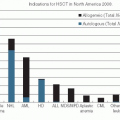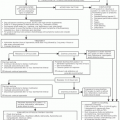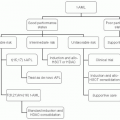Pulmonary toxicity is recognized with a growing number of chemotherapeutic agents. An estimated 5% to 20% or more of patients receiving chemotherapy develop pulmonary toxicity
1,2 either as a result of direct cytotoxicity, oxidative injury, systemic release of cytokines, impairment of alveolar repair and angiogenesis, abnormal apoptosis, capillary damage, or immune-mediated reactions.
1,2,3 The risk of pulmonary toxicity with chemotherapy also increases with older age, history of smoking, presence of preexisting pulmonary disease (especially interstitial lung disease [ILD]), multimod therapy, and high concentrations of supplemental oxygen.
2,4 Genetically determined differences in drug metabolism, the chemical nature of the drug, hypersensitivity reactions, the presence of underlying lung disease, or other host and environmental factors could account for individual susceptibility to develop pulmonary toxicity.
1,2,3,5






